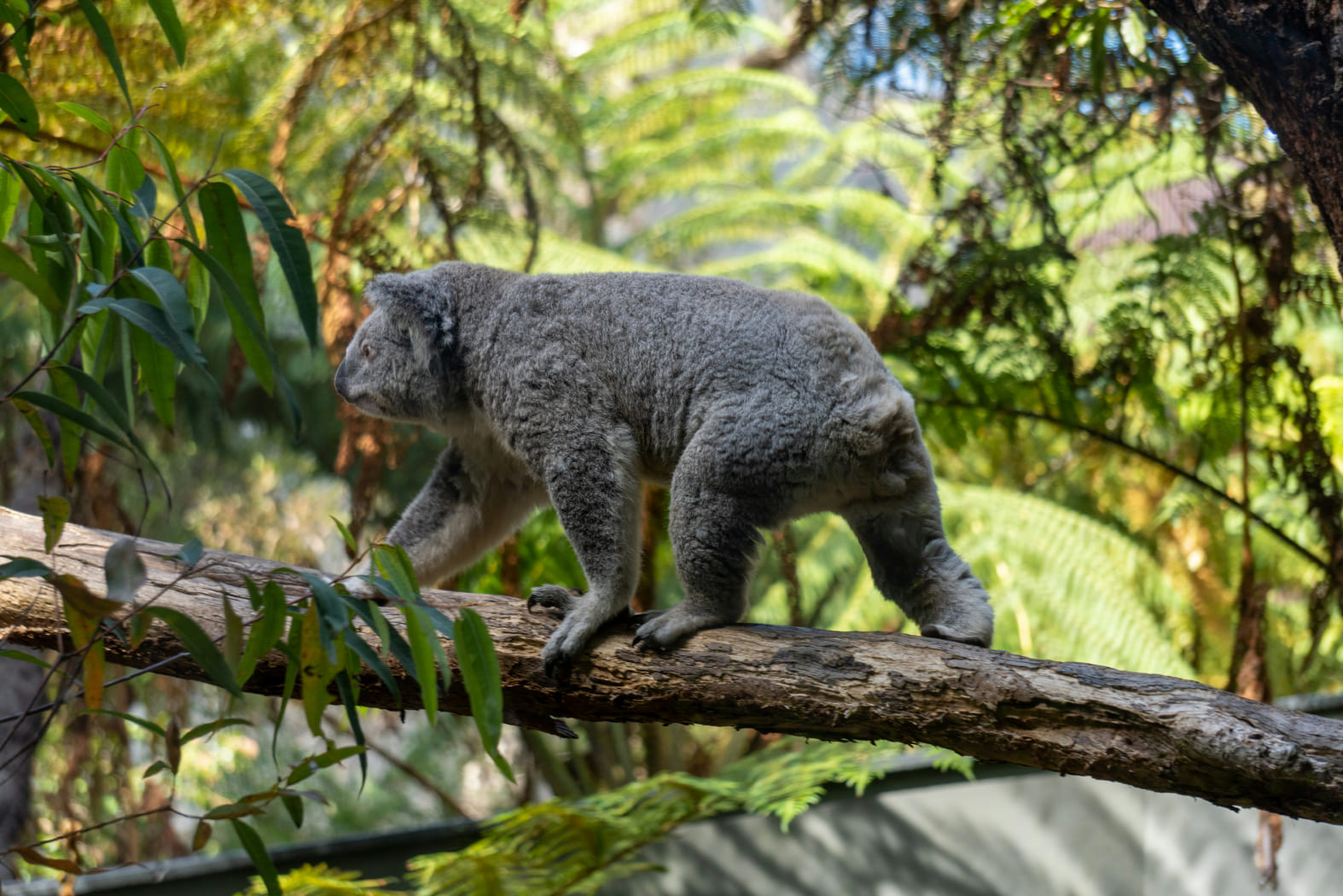The Koala: Australia’s Adorable Tree-Dwelling Icon
Koalas are one of Australia’s most beloved and iconic animals, often recognized by their fluffy ears, round noses, and calm demeanor. Despite their bear-like appearance, koalas are actually marsupials, more closely related to kangaroos than to any bear species. Found primarily along the eastern coast of Australia, koalas live in eucalyptus forests, where they spend most of their lives high up in trees. This article delves into the unique lifestyle, adaptations, and conservation challenges facing these charming creatures.
Adaptations to Arboreal Life
Koalas are perfectly adapted to a life in the trees. With strong, sharp claws and opposable thumbs, they are able to grip branches securely and climb effortlessly. Their bodies are compact and muscular, which helps them balance and navigate through the treetops. Koalas also have a unique digestive system that enables them to feed almost exclusively on eucalyptus leaves, which are tough, fibrous, and often low in nutrients. In fact, eucalyptus leaves are toxic to most animals, but koalas have special bacteria in their gut that helps break down the toxins and extract essential nutrients.
Diet and Low Energy Lifestyle
Eucalyptus leaves make up nearly 90% of a koala’s diet, which has a significant impact on their behavior and energy levels. These leaves are low in calories, so koalas must conserve energy by sleeping for up to 18–20 hours a day. This sedentary lifestyle allows them to digest their food slowly, ensuring they extract as many nutrients as possible. Koalas also have a highly efficient water balance system; they obtain most of the moisture they need from the leaves they consume, which is particularly useful in the often dry Australian climate.
Conservation Challenges
Despite their unique adaptations, koalas face numerous challenges, especially due to habitat loss. Urban expansion, deforestation, and wildfires have significantly reduced koala populations in recent years. Additionally, diseases such as chlamydia have spread rapidly among koala populations, further endangering their survival. Conservation efforts focus on protecting their habitats, establishing koala sanctuaries, and raising public awareness about the threats they face. By safeguarding their environment, we can help ensure that these charming animals continue to be a part of Australia’s natural heritage.


